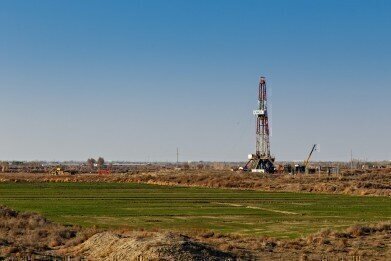Fuel for thought
The Science Behind Microbial Enhanced Oil Recovery
Sep 29 2015
Despite the fact that the renewable resource revolution is gaining rapid momentum across the globe, technological advancements in oil production and recovery are still going strong. Some are far more lucrative than others, and microbial enhanced oil recovery (MEOR) has emerged as one of the most promising new methods. It involves the deployment of genetically-engineered micro-organisms deep underground in a bid to force oil up into the clutches of oil magnates.
Sucking up every last drop
As oil supplies start to run short producers are looking at new ways to suck up every last drop. Unfortunately it’s not quite as simple as drilling a hole in the ground and siphoning out oil. A portion of a supply may be readily available but as more and more is collected, it becomes harder and harder to recover. It’s at this stage that wells are usually abandoned. However now, MEOR is allowing oil companies to push the tipping point back further than ever. The technology has the potential to extend the life of oil reserves by up to 11% which represents big bucks for well owners and developers.
A three tiered approach
The MEOR process is made up of three major steps as follows:
- Micro-organisms are injected into wells where they break down crude oil to reduce its viscosity. When oil flows at the consistency of water as opposed to syrup it’s far easier to harvest.
- As the micro-organisms naturally metabolise they create carbon dioxide gas and biomass. Together these elements displace the remaining oil and push it up to the surface.
- The final stage is called plugging and refers to the process wherein waterproof exopolysaccharides produced by the micro-organisms block the holes in porous underground rock. This ensures that the only direction oil can flow is up.
The obstacles of MEOR
Unfortunately MEOR isn’t without its controversies. Environmentalists maintain that pumping foreign matter into the ground is ecologically irresponsible. In the past natural gas hydro fracturing has contaminated drinking water and even caused earthquakes. Scientists fear that micro-organisms could do the same.
Viscocity plays an important role in many production processes. In the article ‘Fully Automated Instrument for Solution Viscosity in Polymeric Materials’ the author explores how the Intrinsic Viscosity Analyzer (IVA) instrument is used to measure the intrinsic viscosity in a wide range of polymeric materials, from ambient temperature up to 200ºC. Thanks to an autosampler with capacity of up to 42 samples the process can be performed with zero user intervention.
Digital Edition
PIN 25.6 Buyers' Guide
January 2025
Buyers' Guide Directory - Product Listings by Category - Suppliers Listings (A-Z) Articles Analytical Instrumentation - ASTM D7042: The Quantum Leap in Viscosity Testing Technology -...
View all digital editions
Events
Jan 20 2025 San Diego, CA, USA
Jan 22 2025 Tokyo, Japan
Jan 25 2025 San Diego, CA, USA
SPE Hydraulic Fracturing Technology Conference and Exhibition
Feb 04 2025 The Woodlands, TX, USA
Feb 05 2025 Guangzhou, China



















